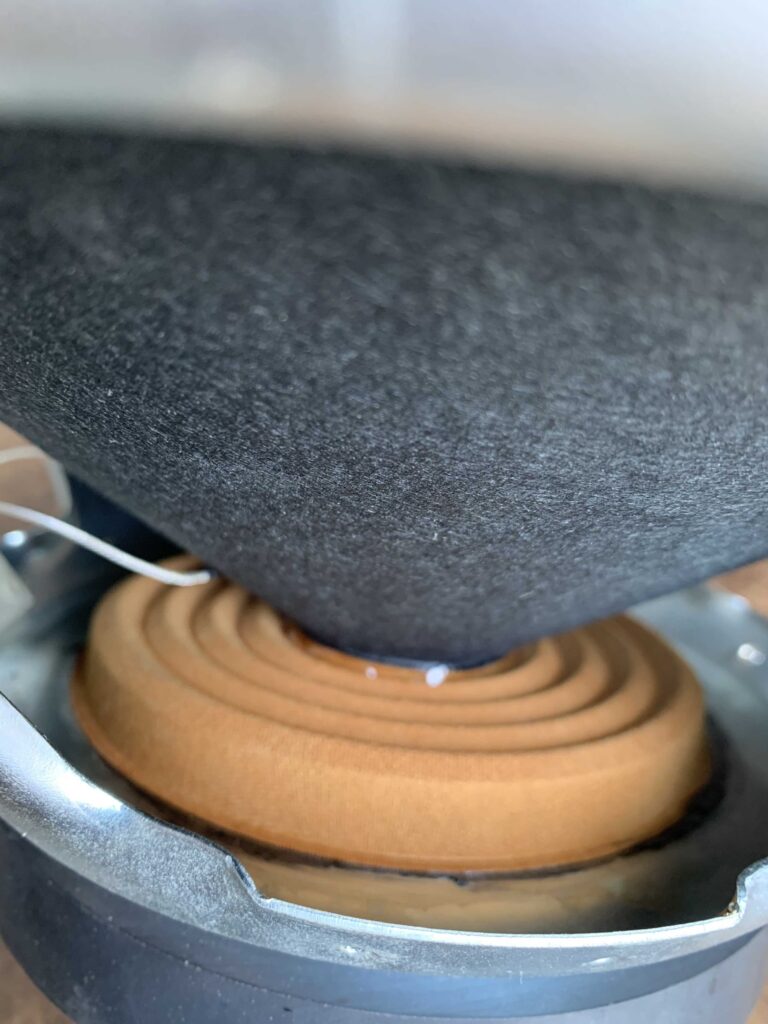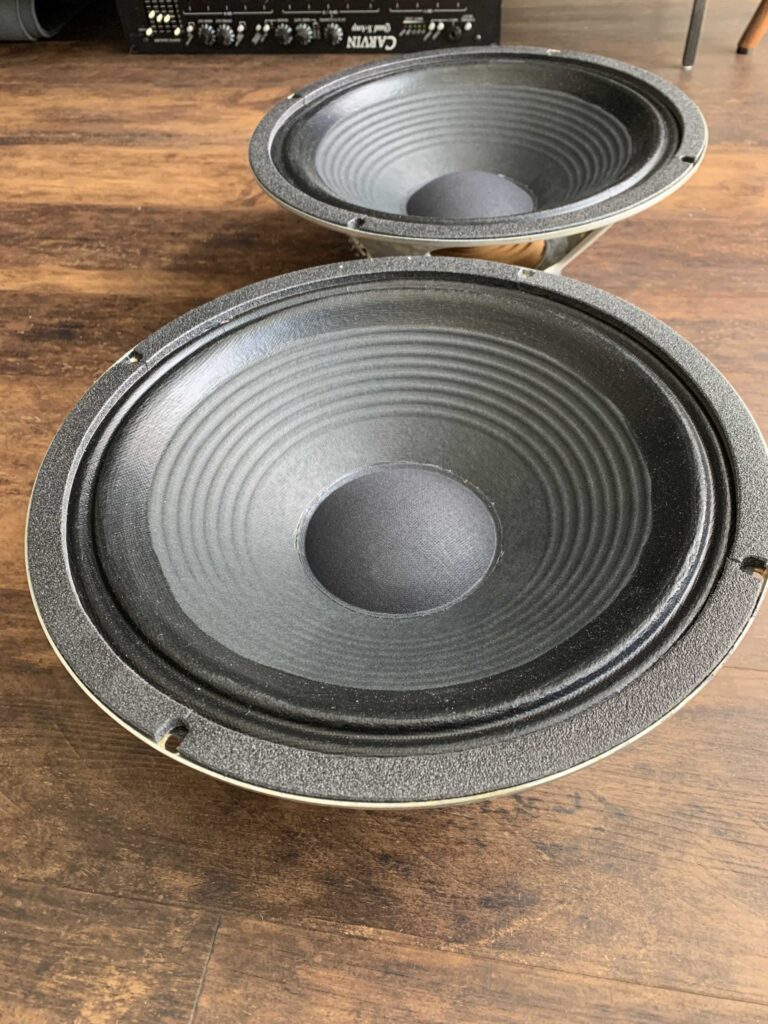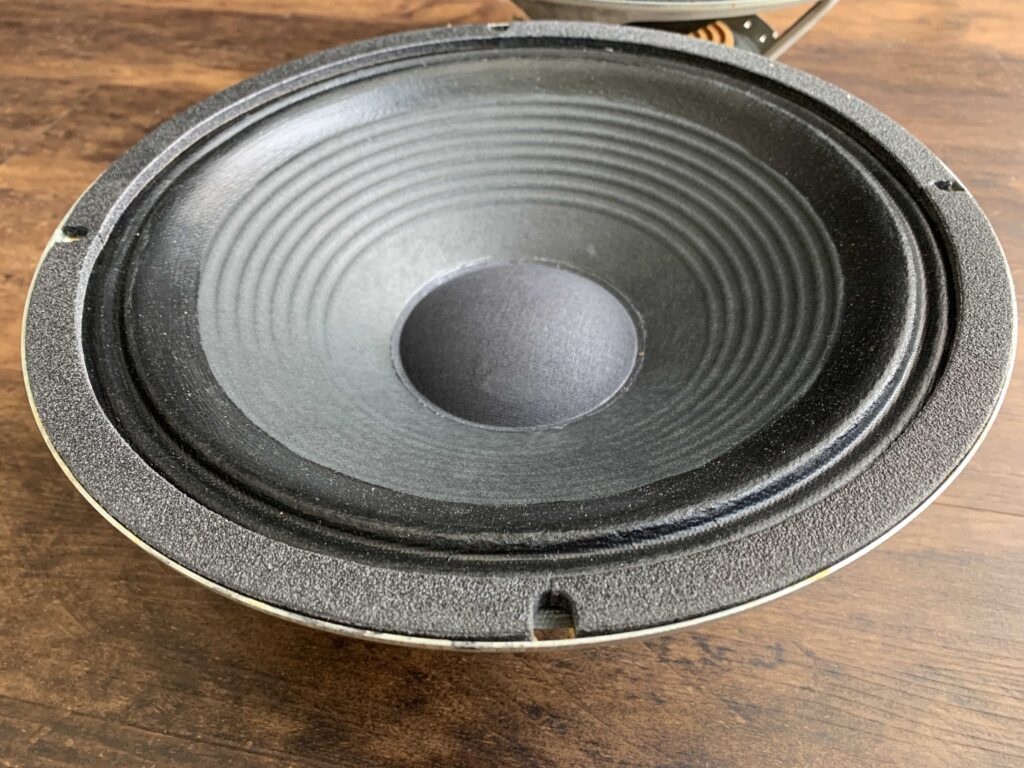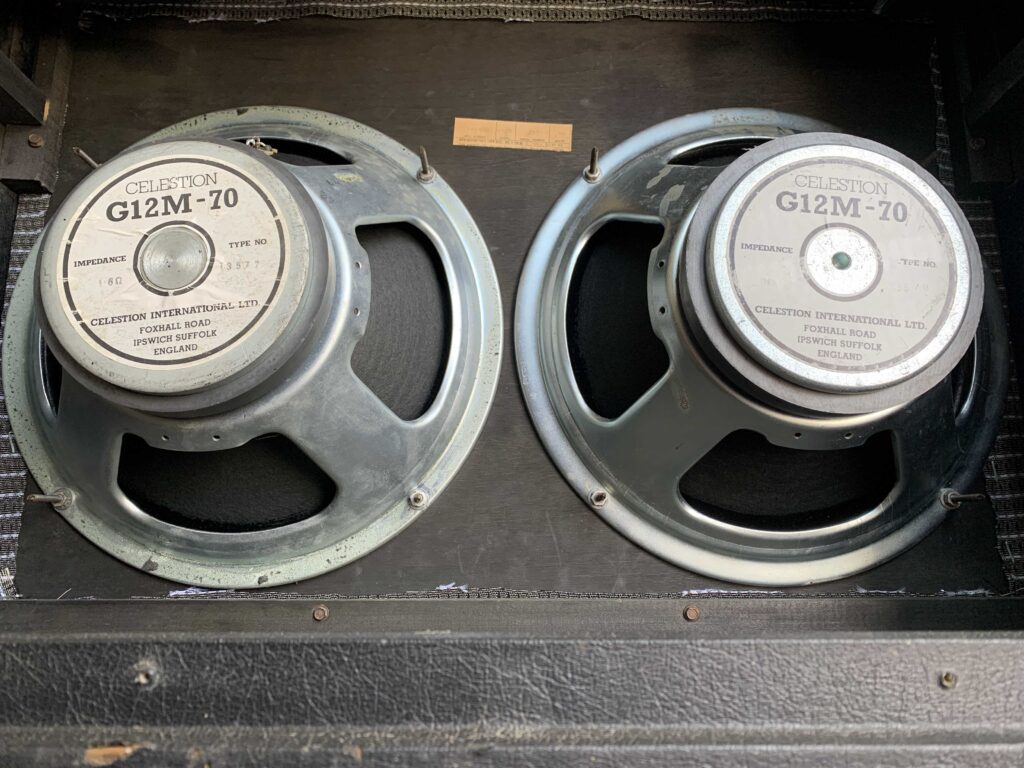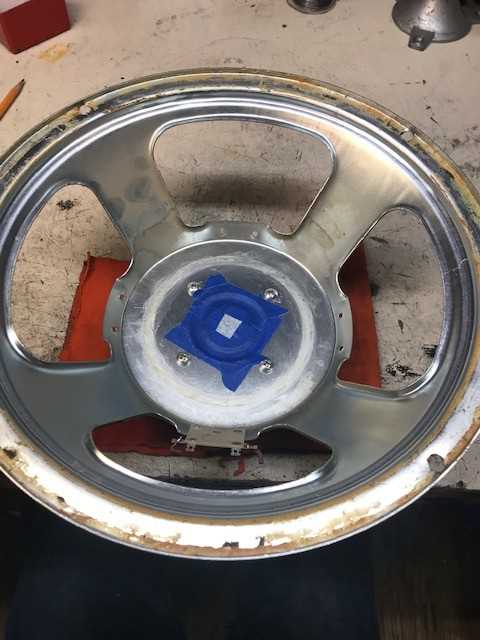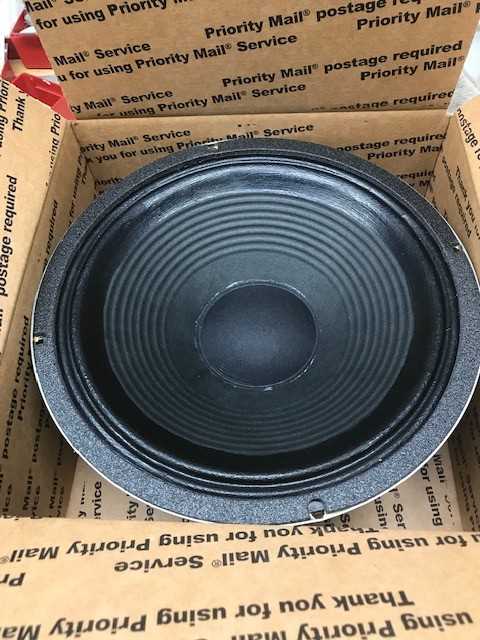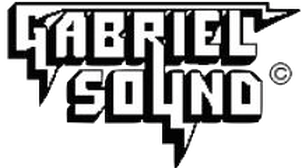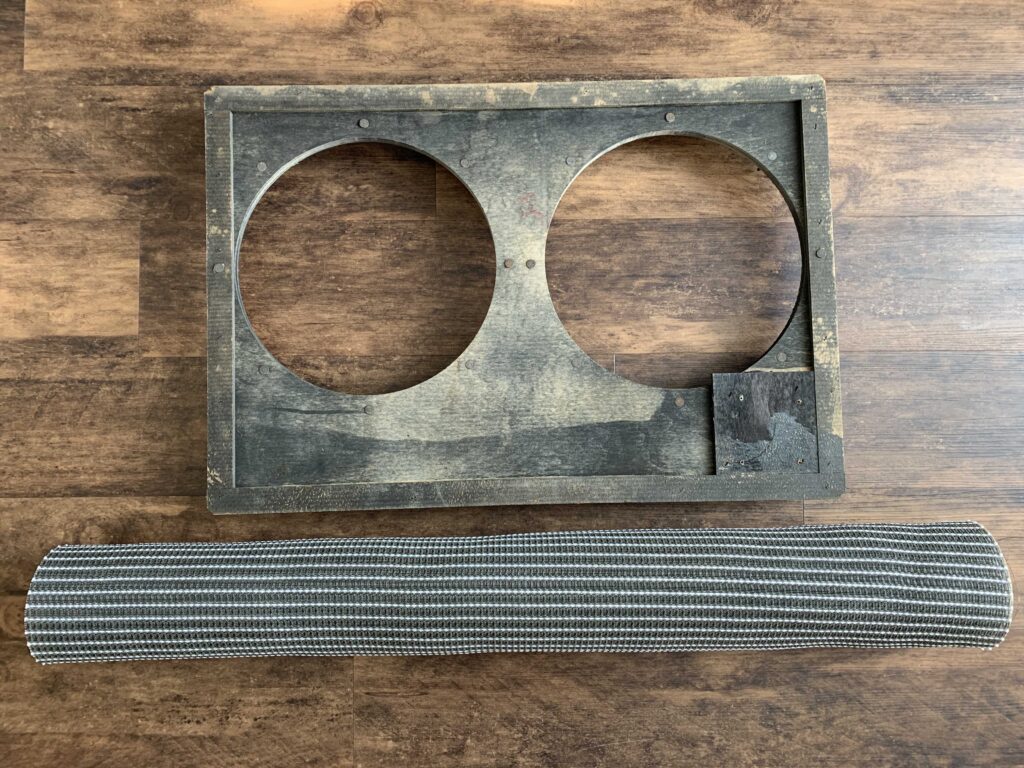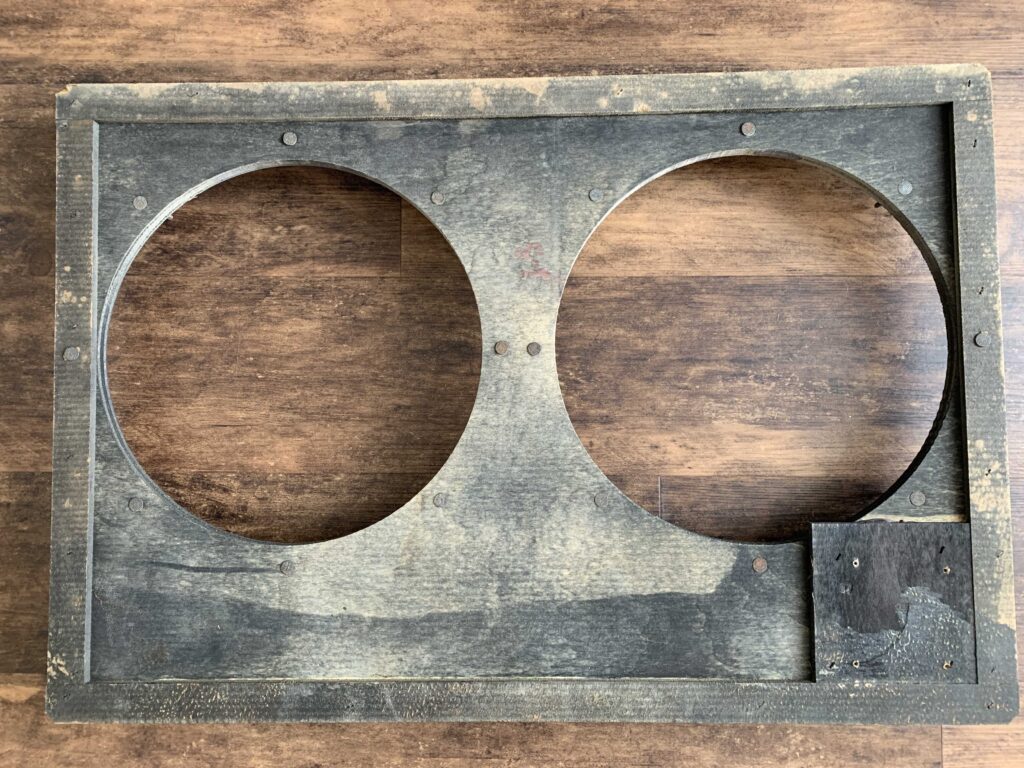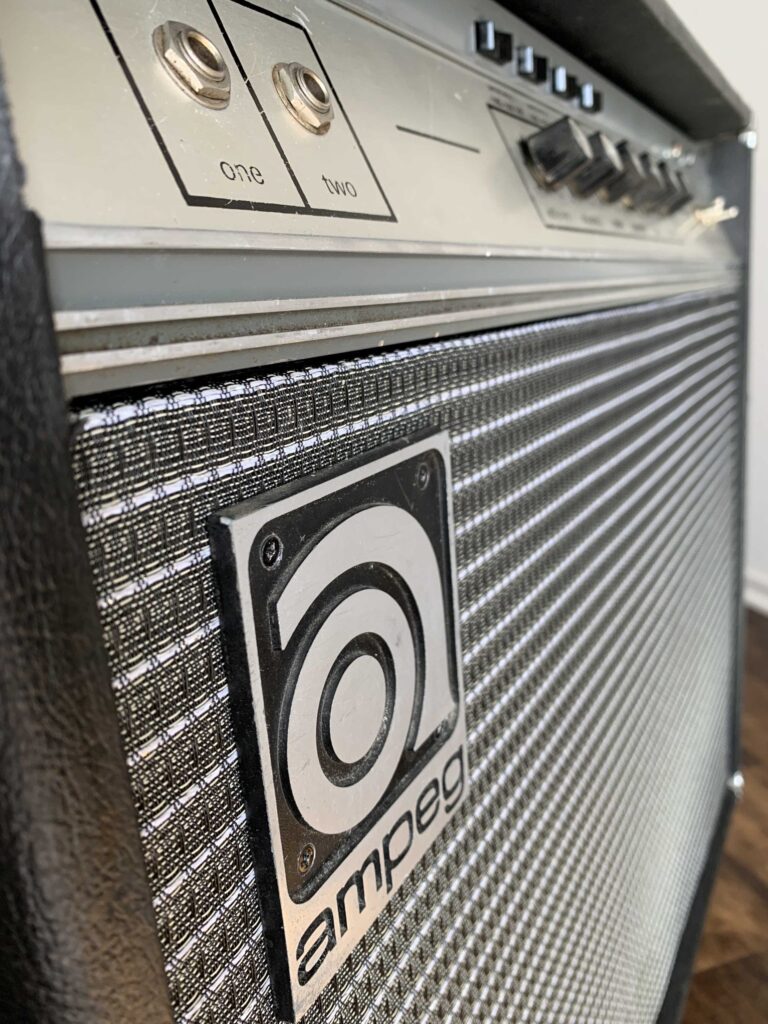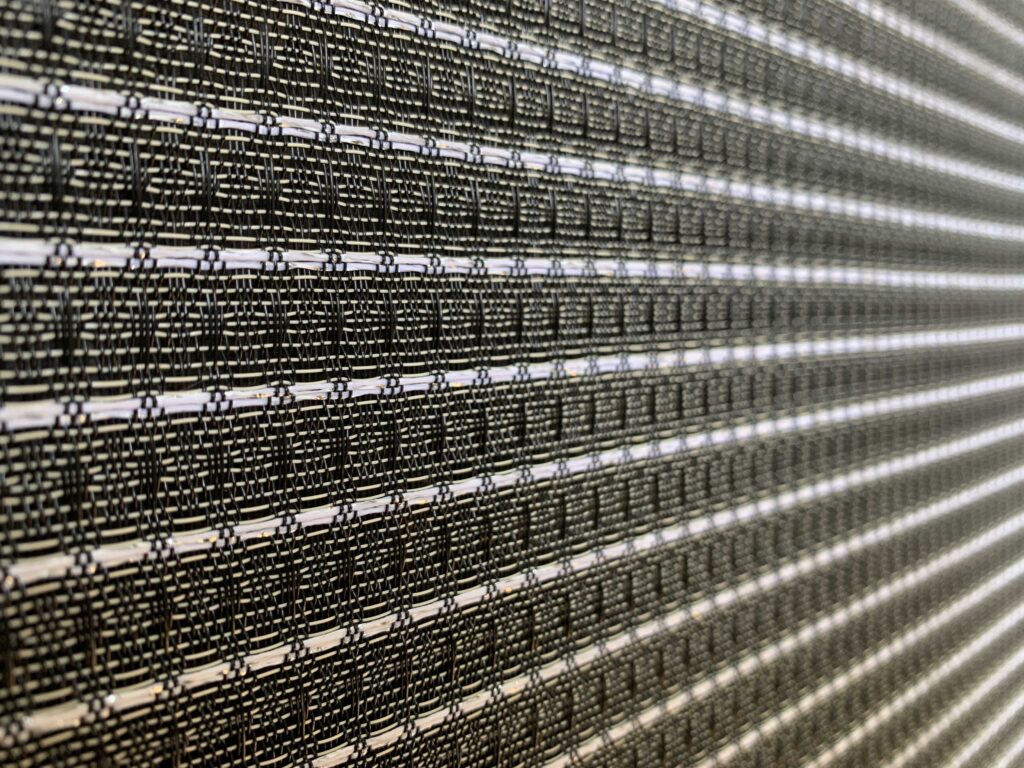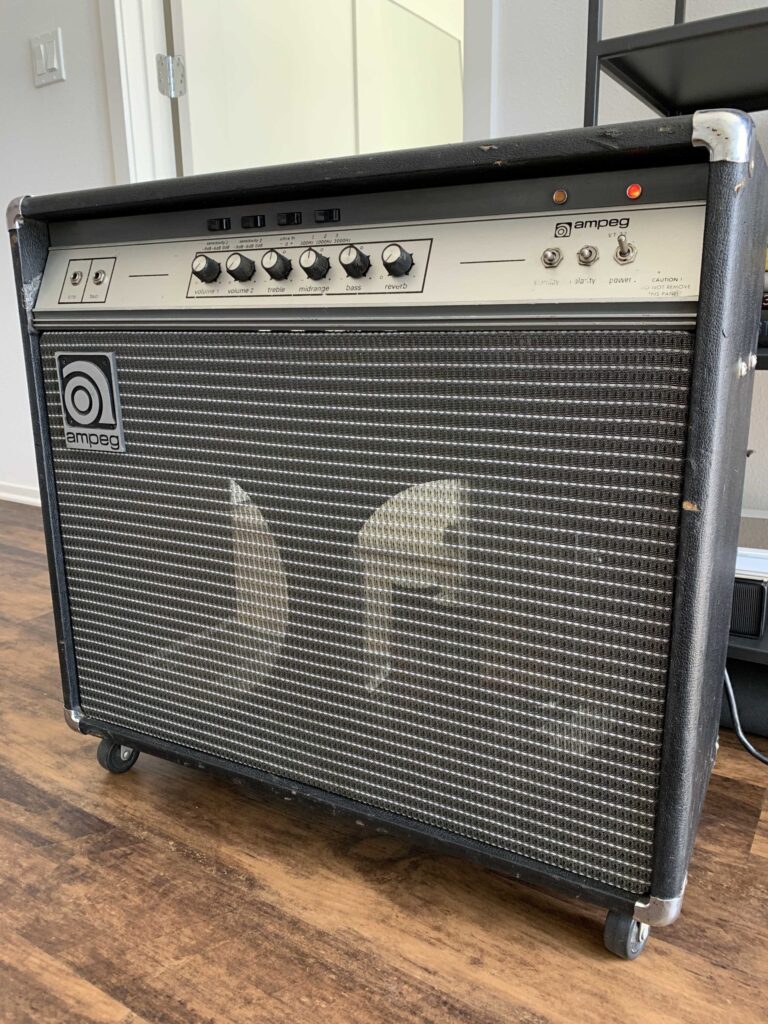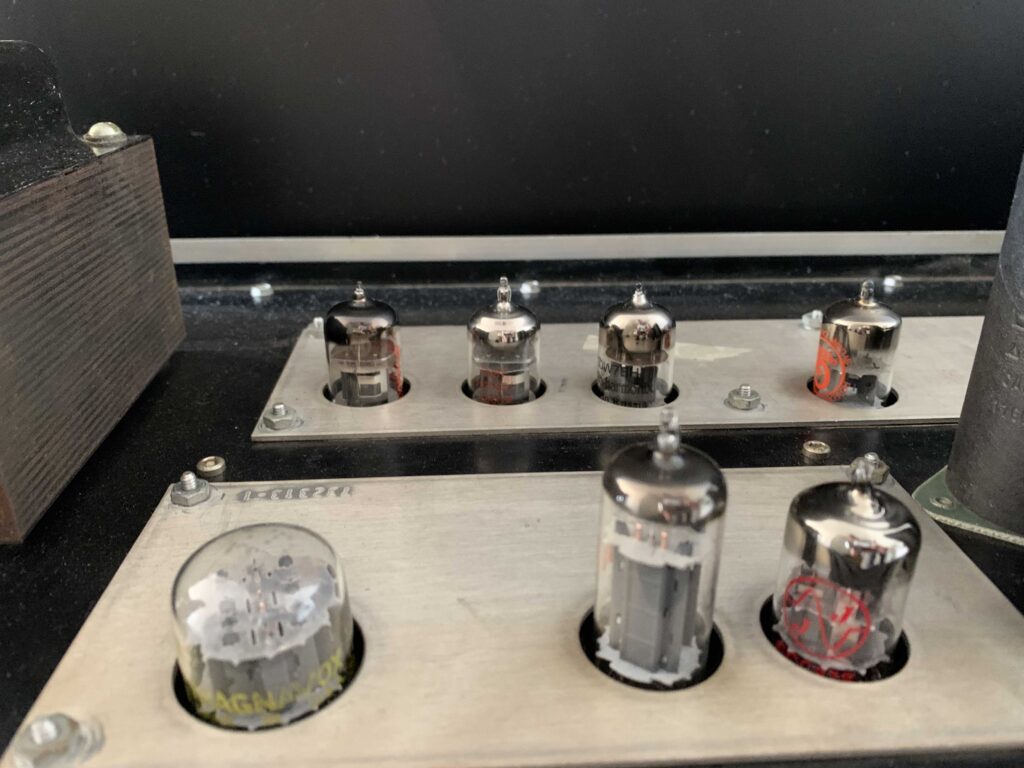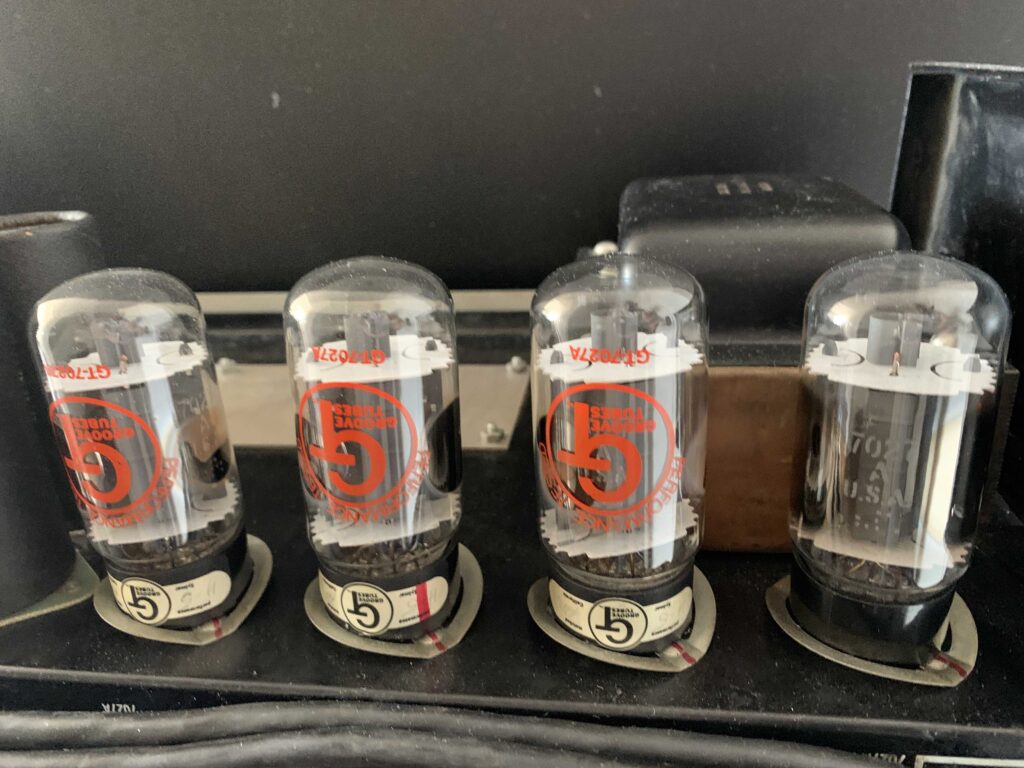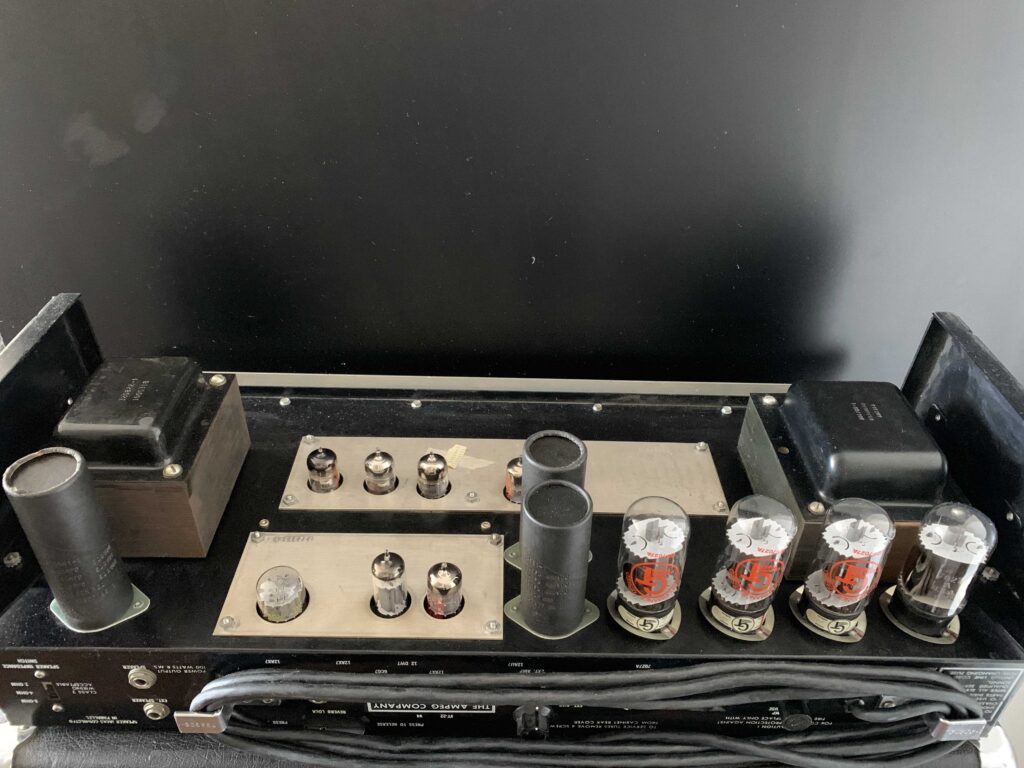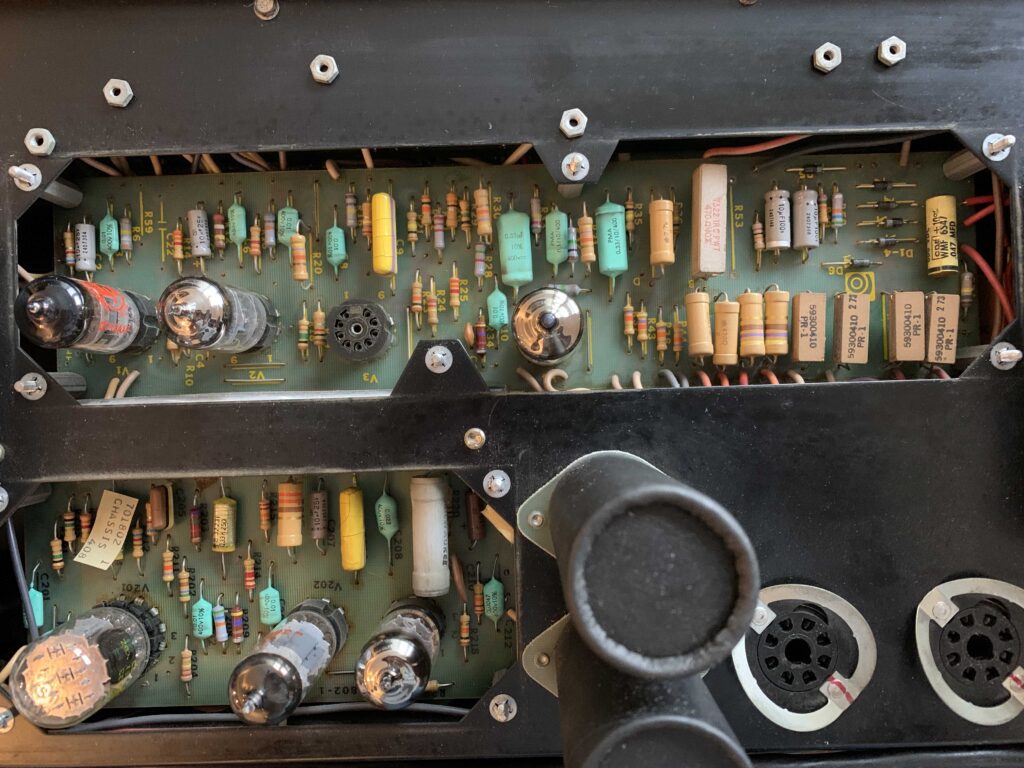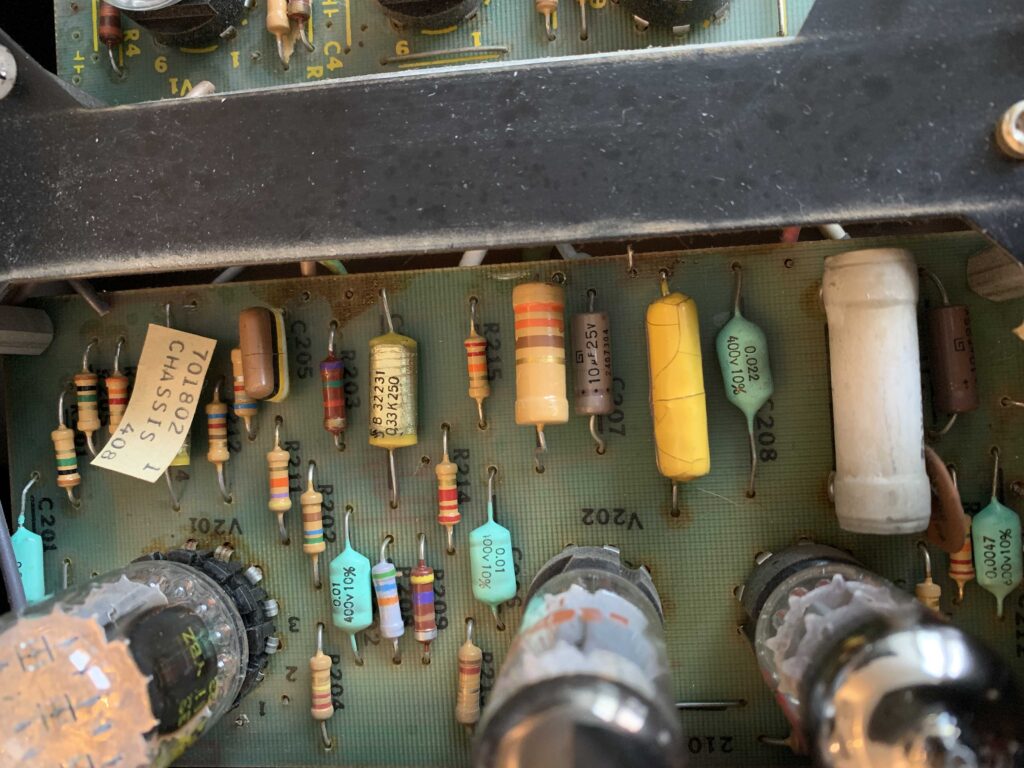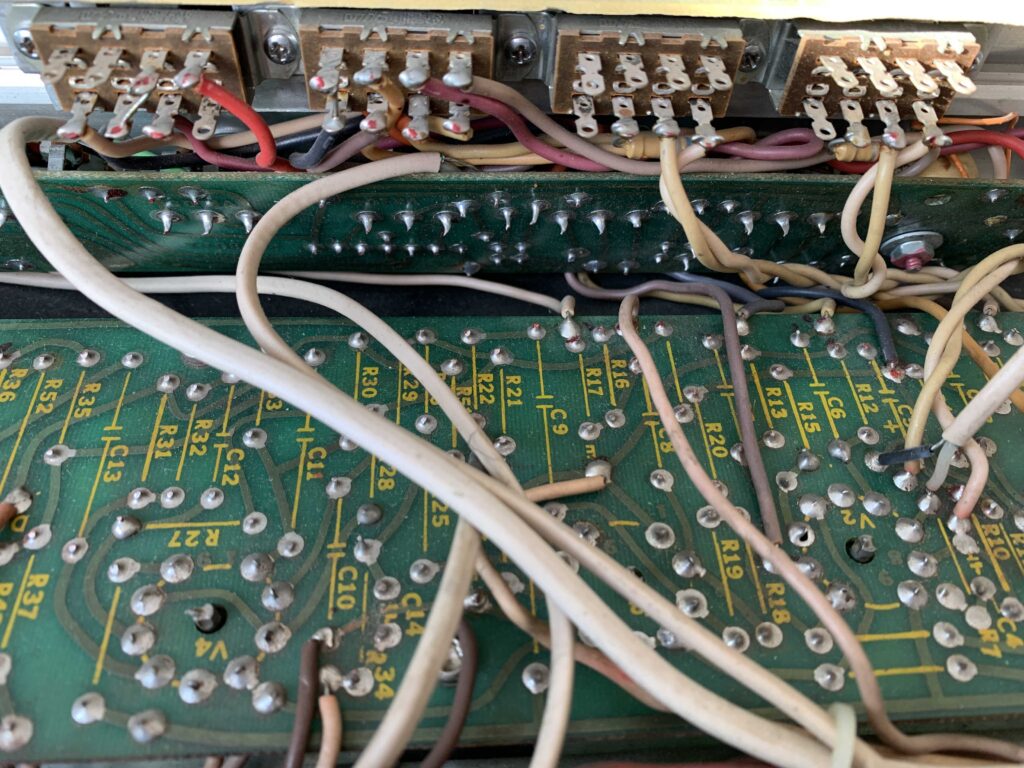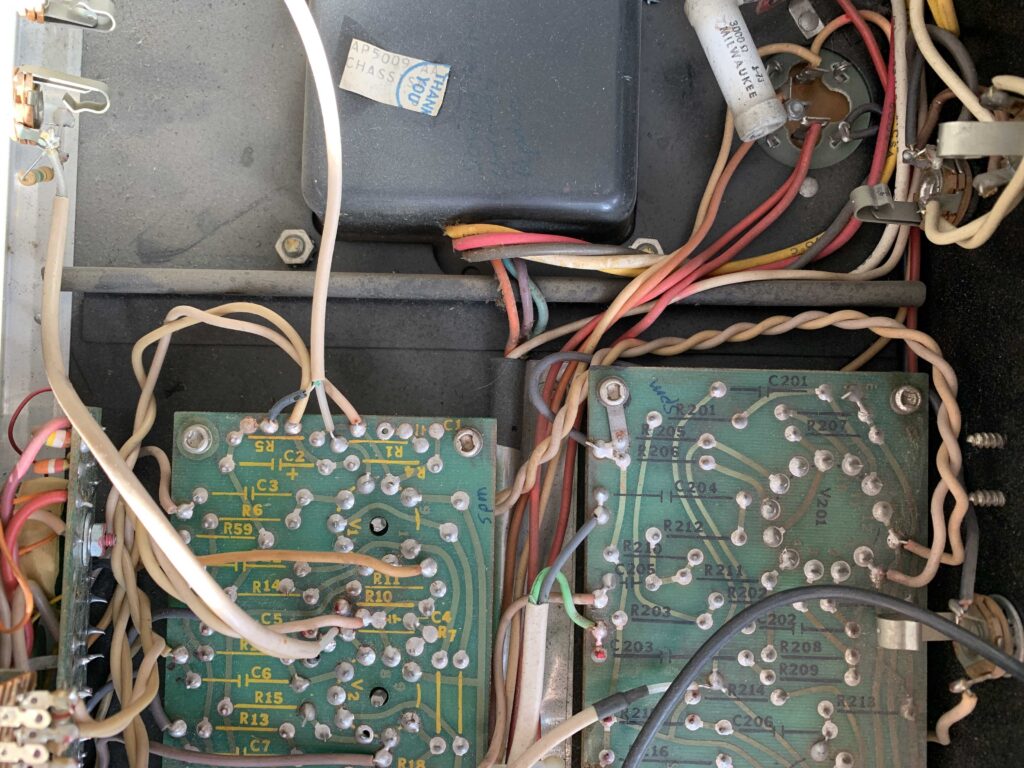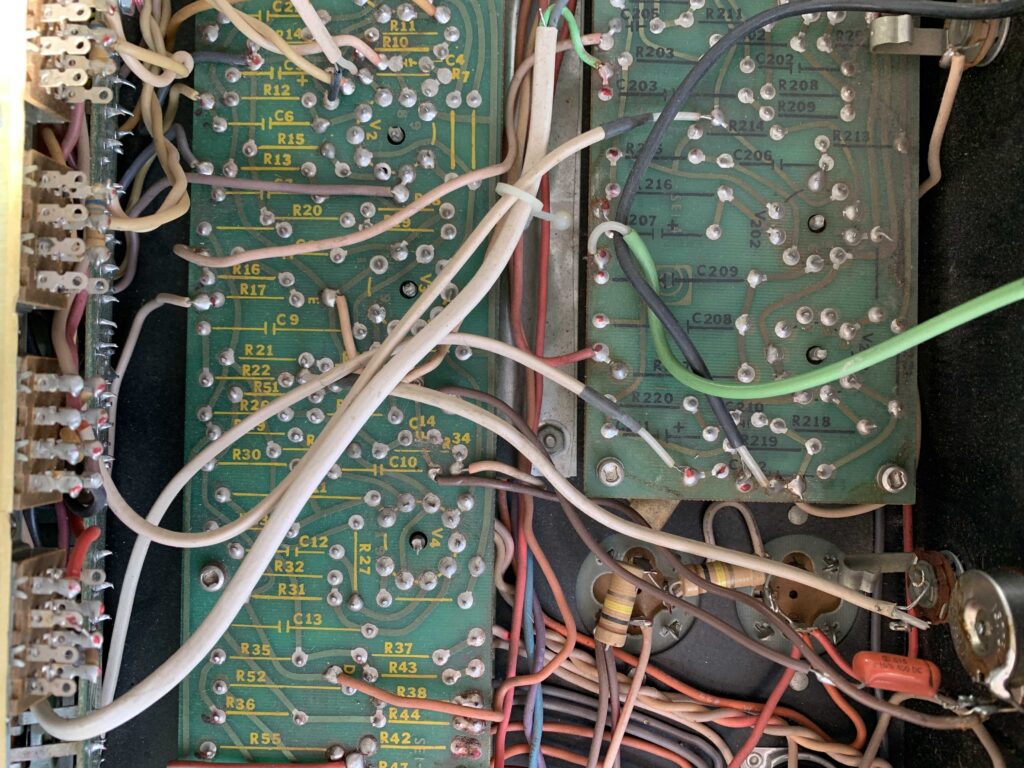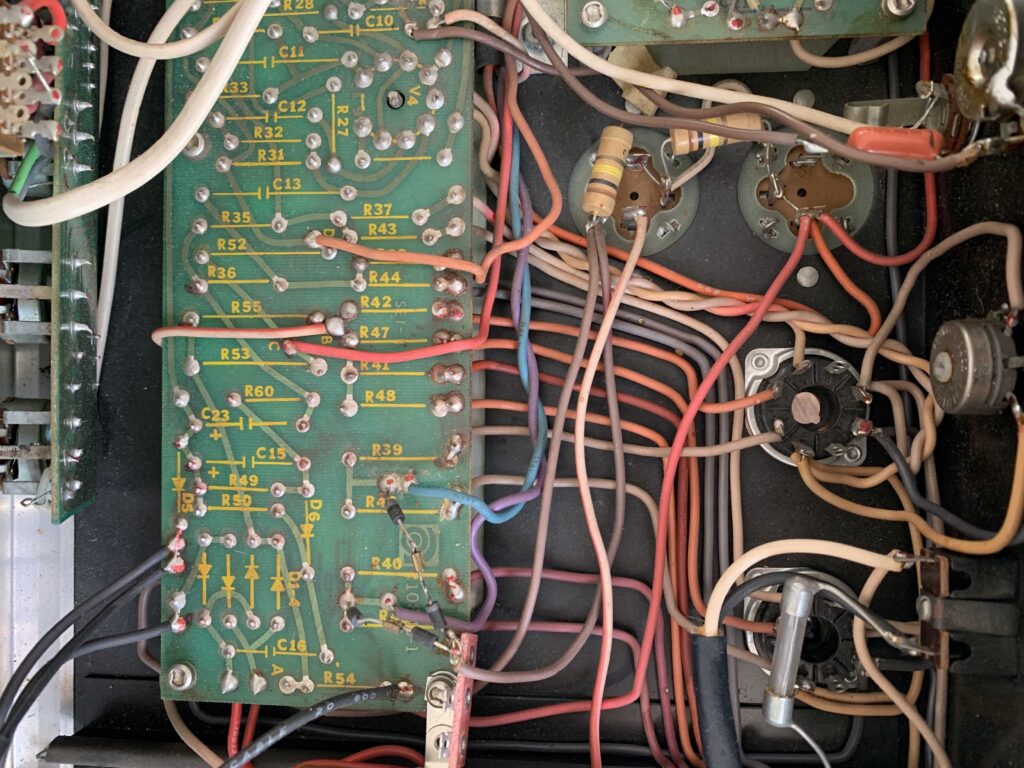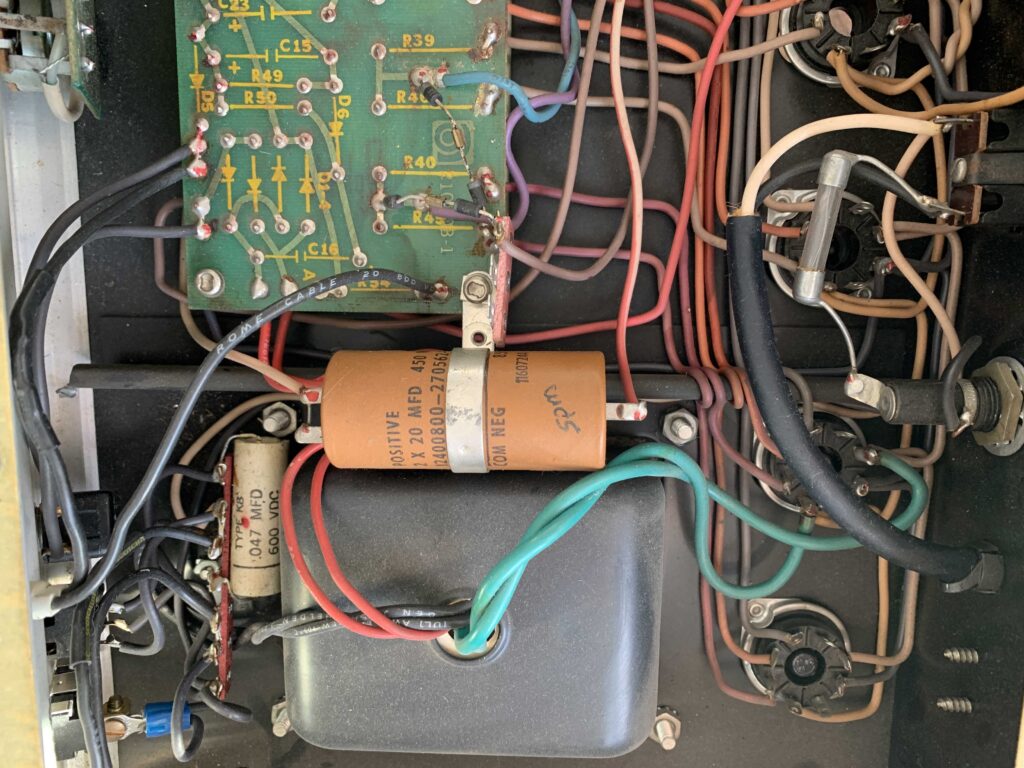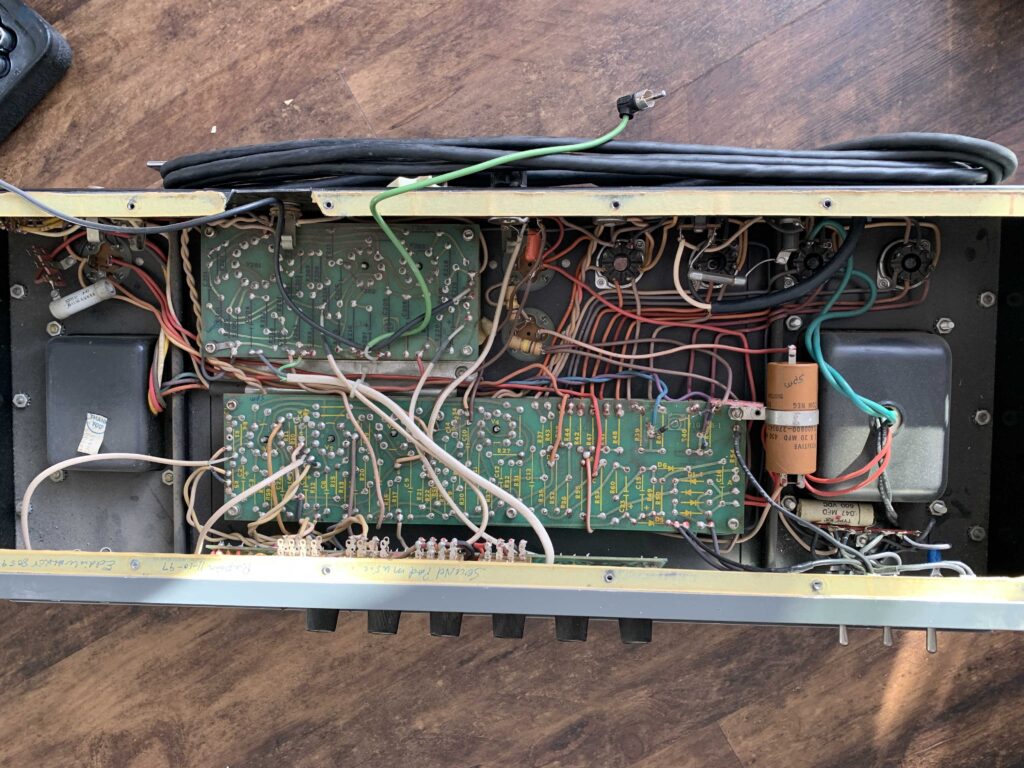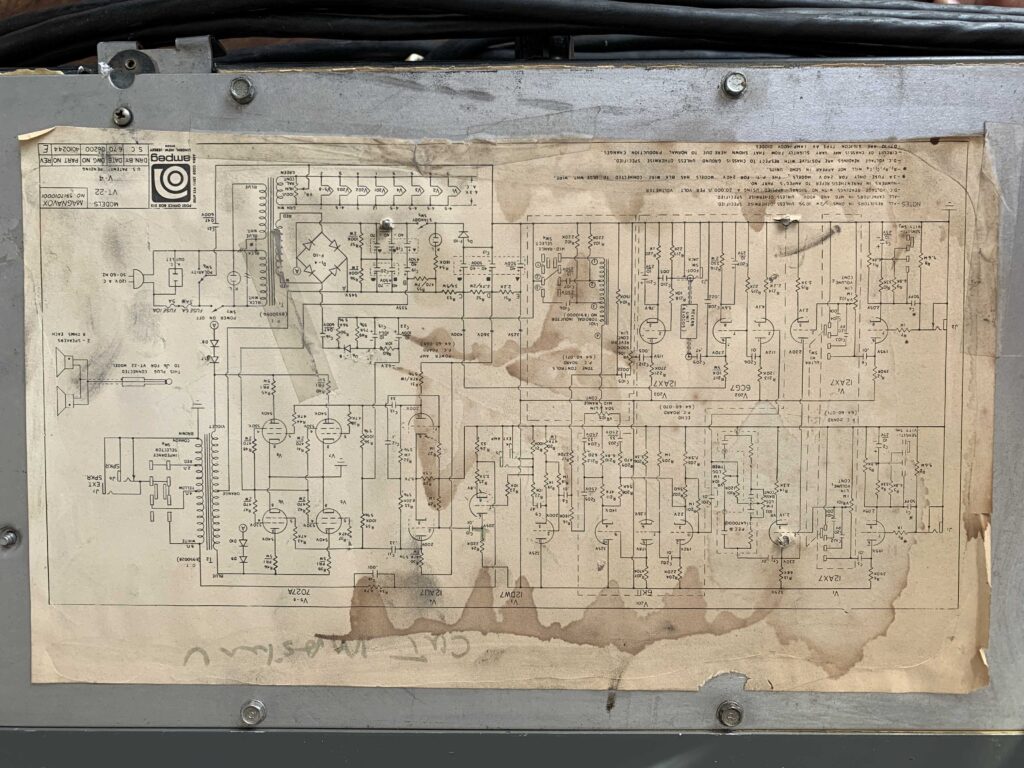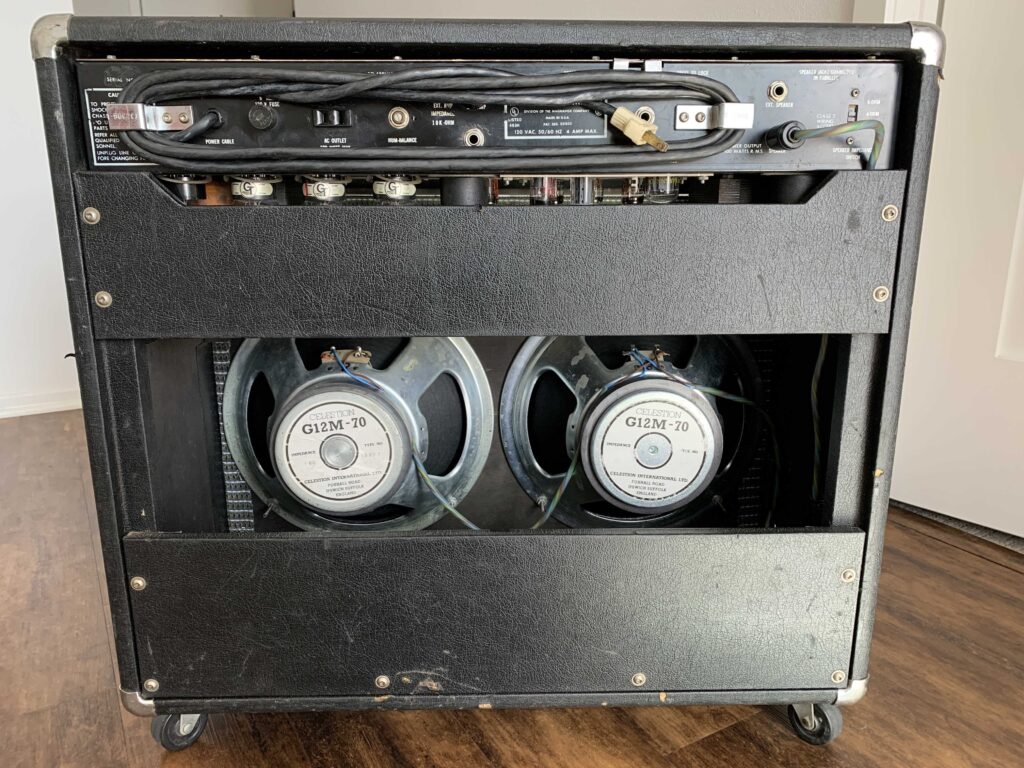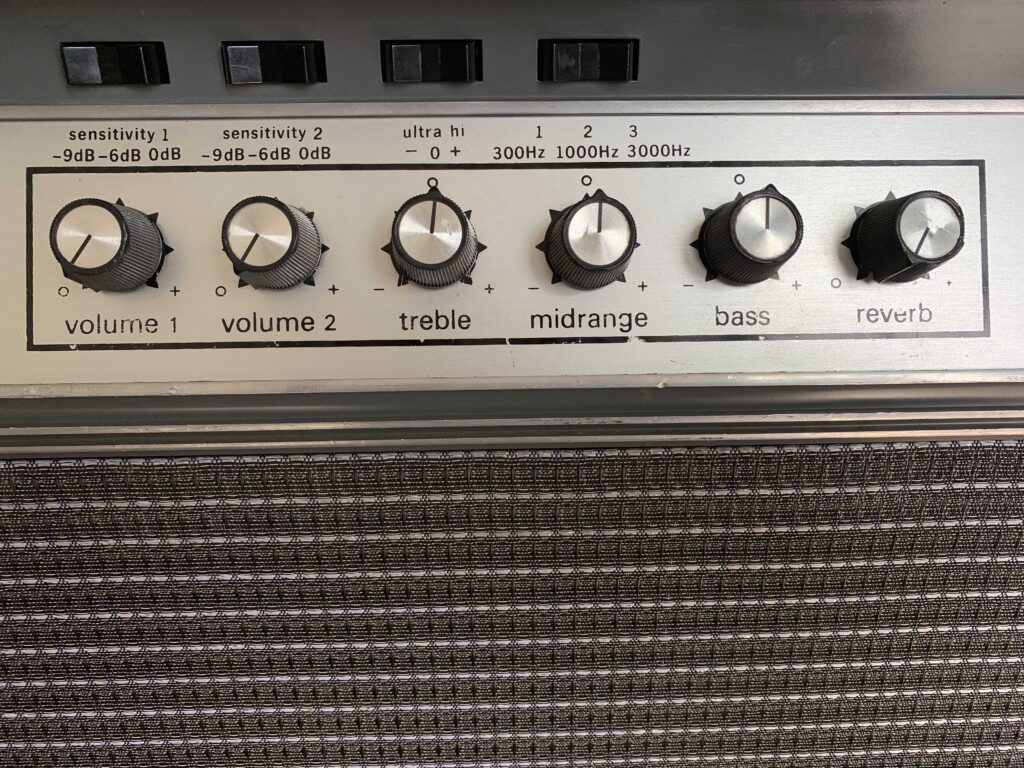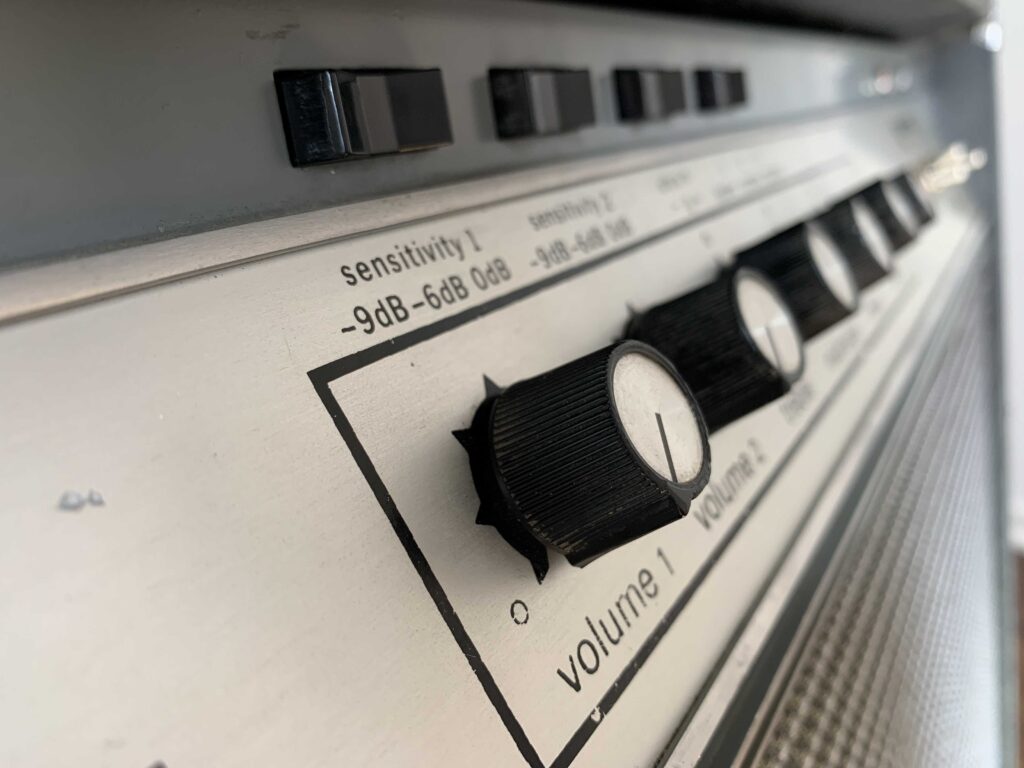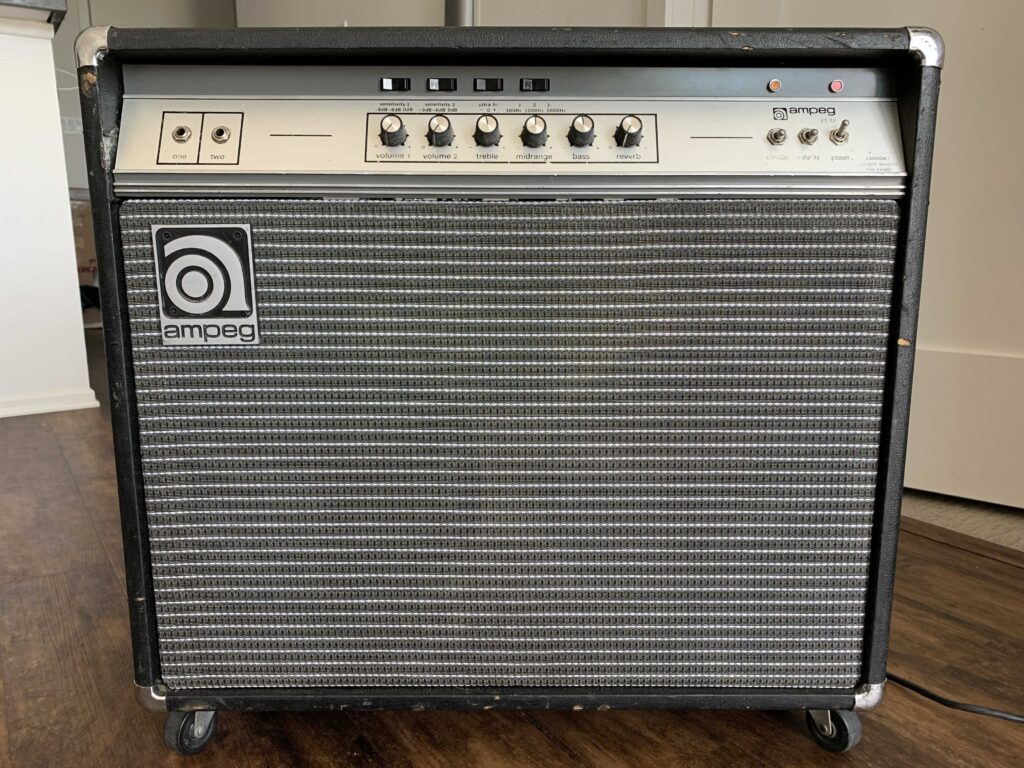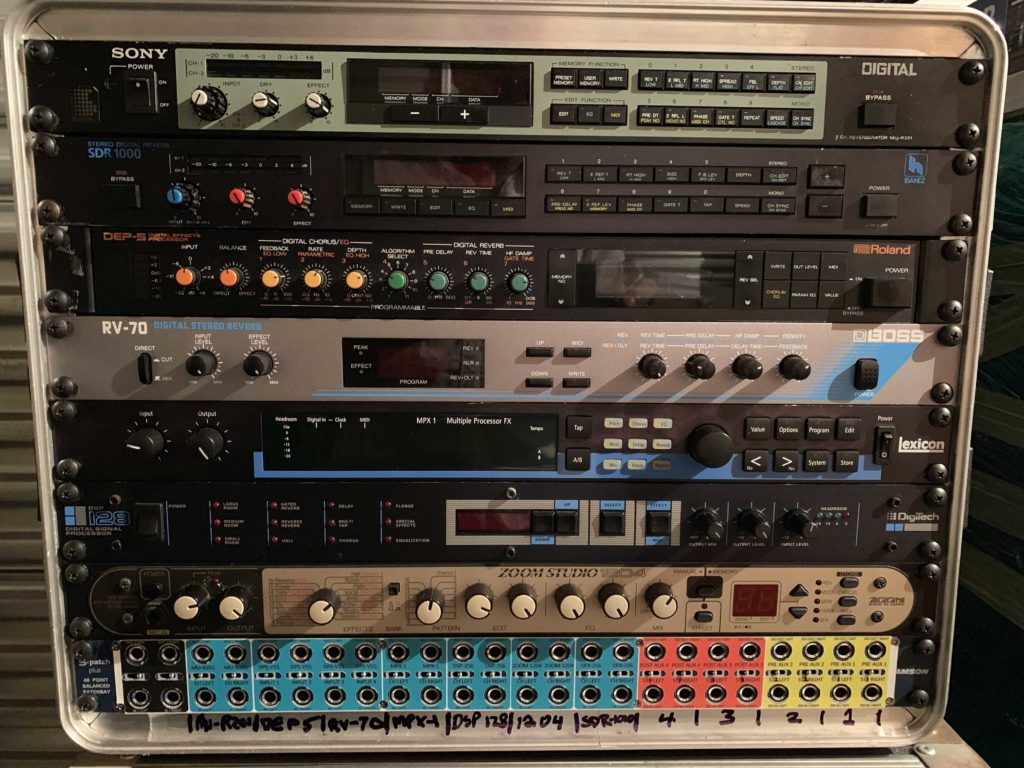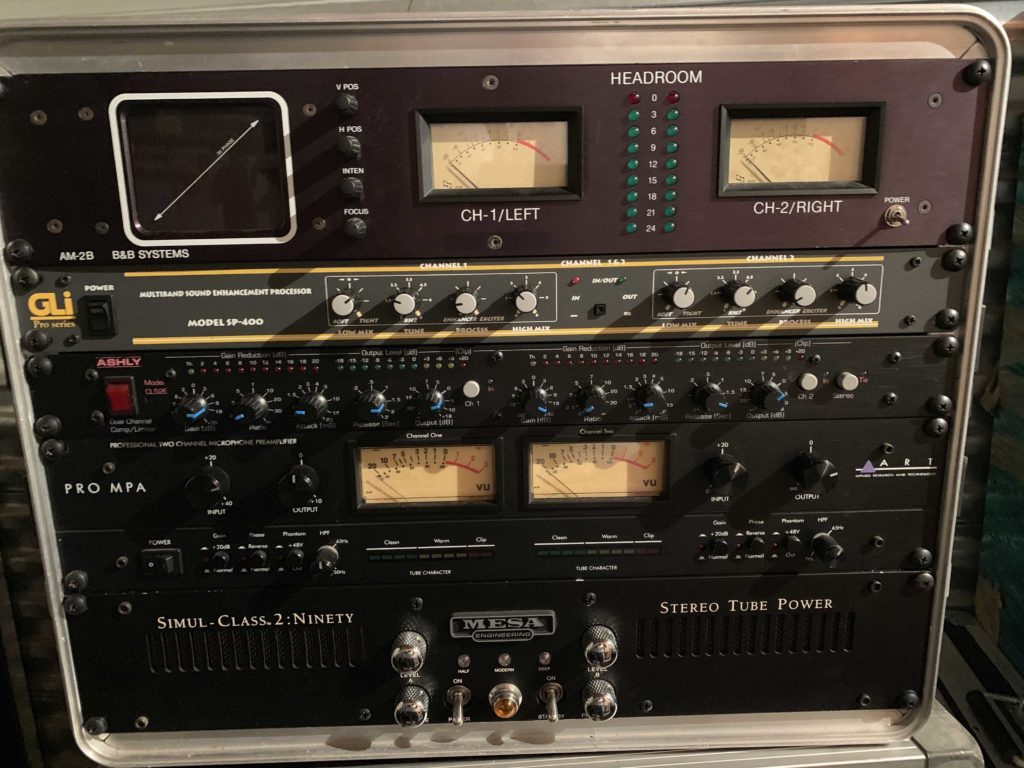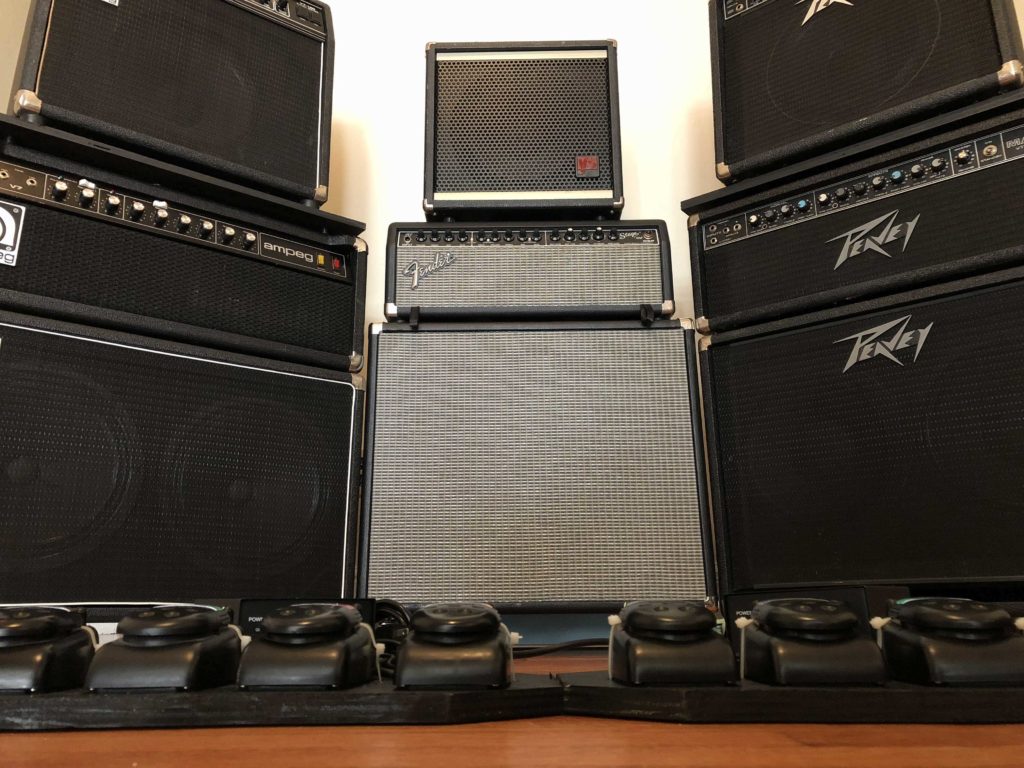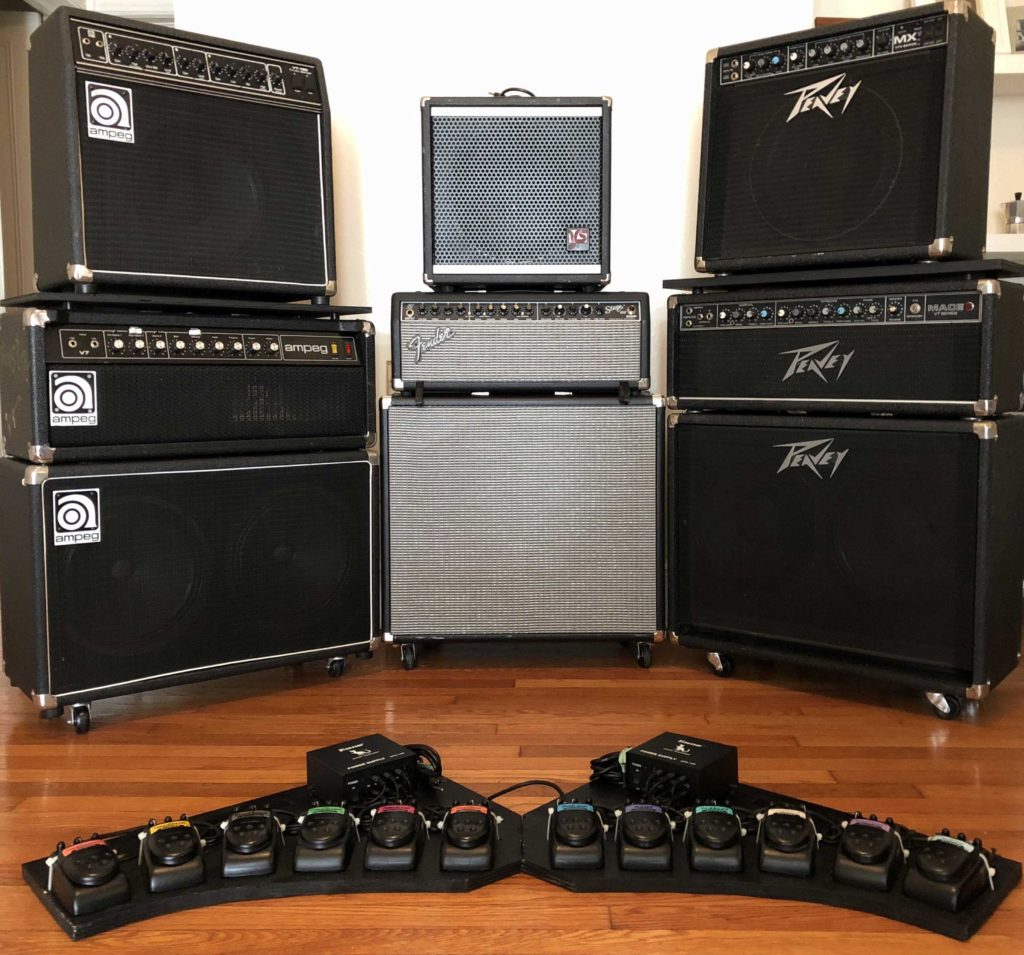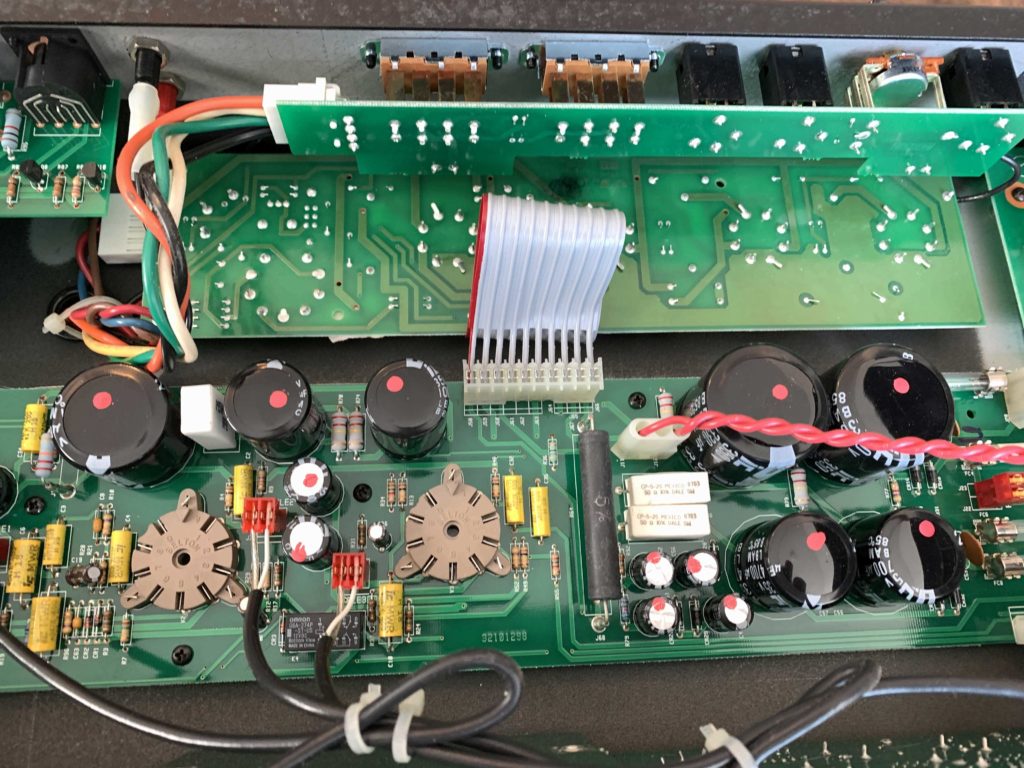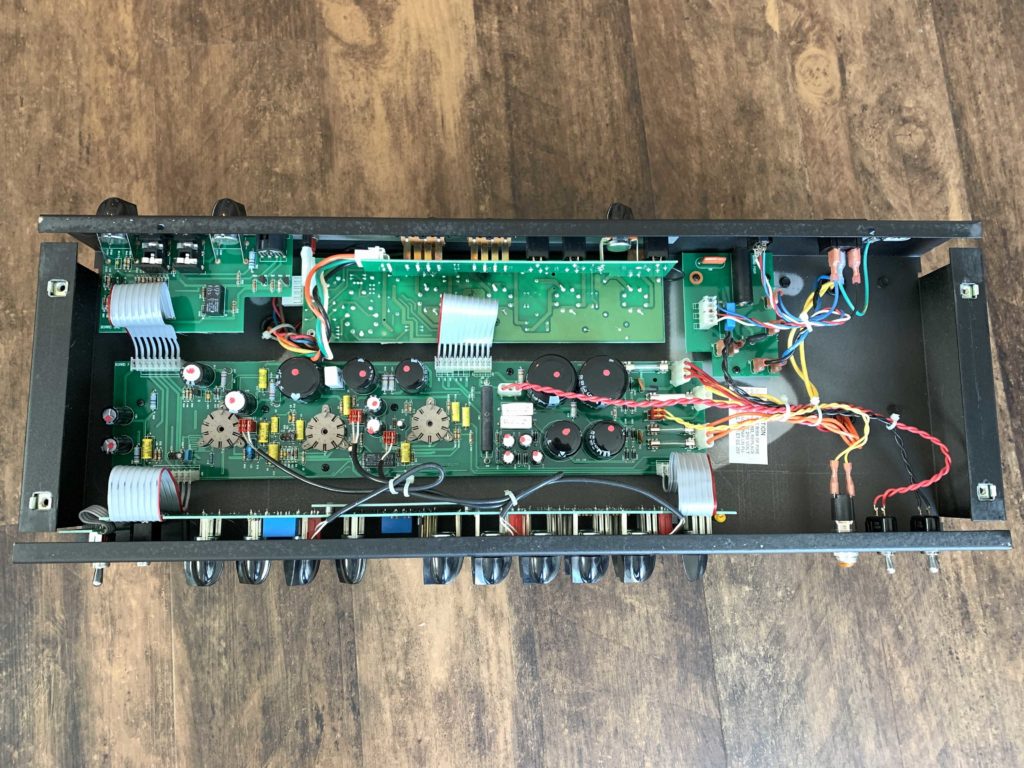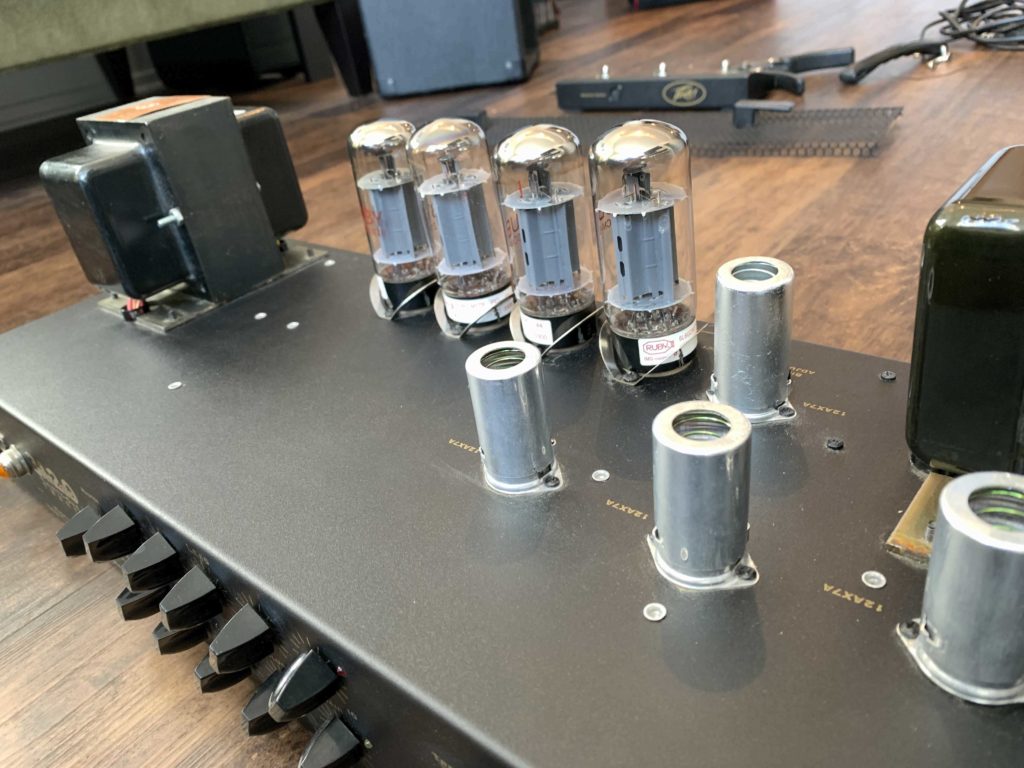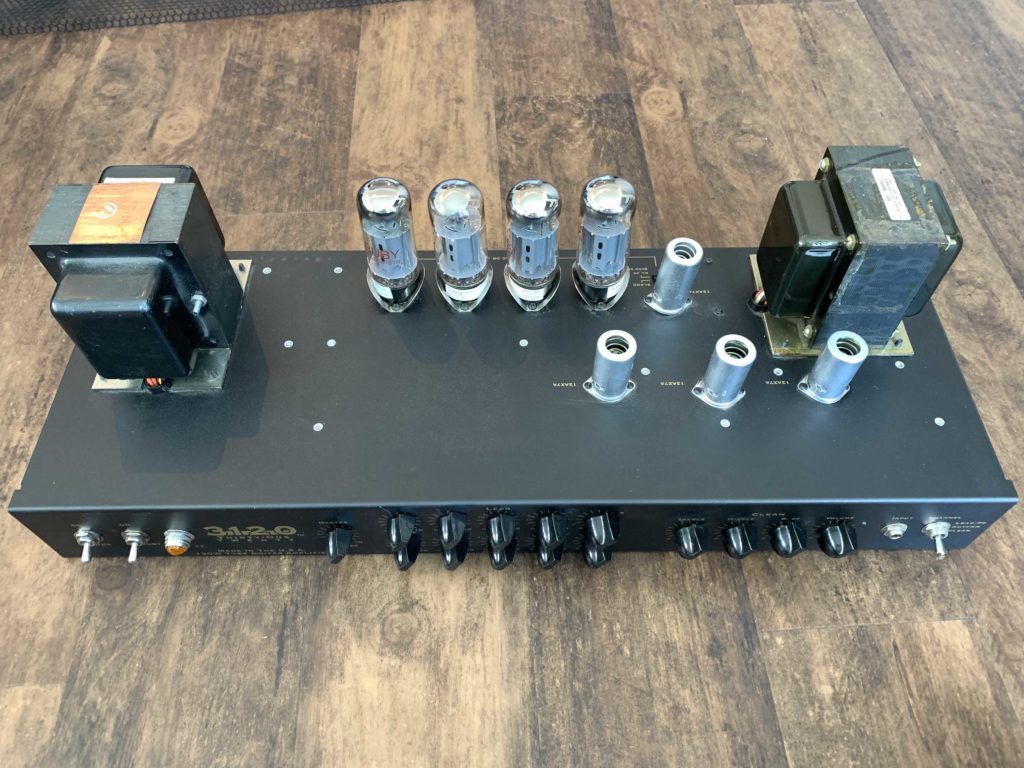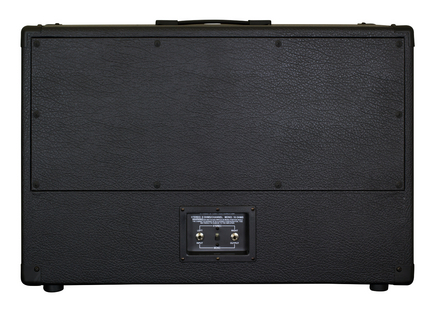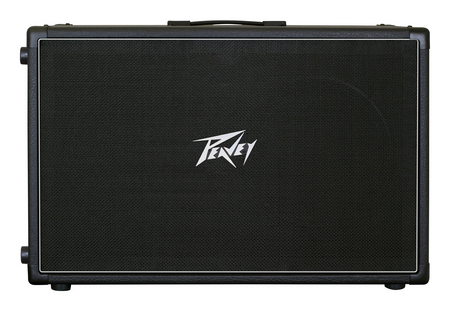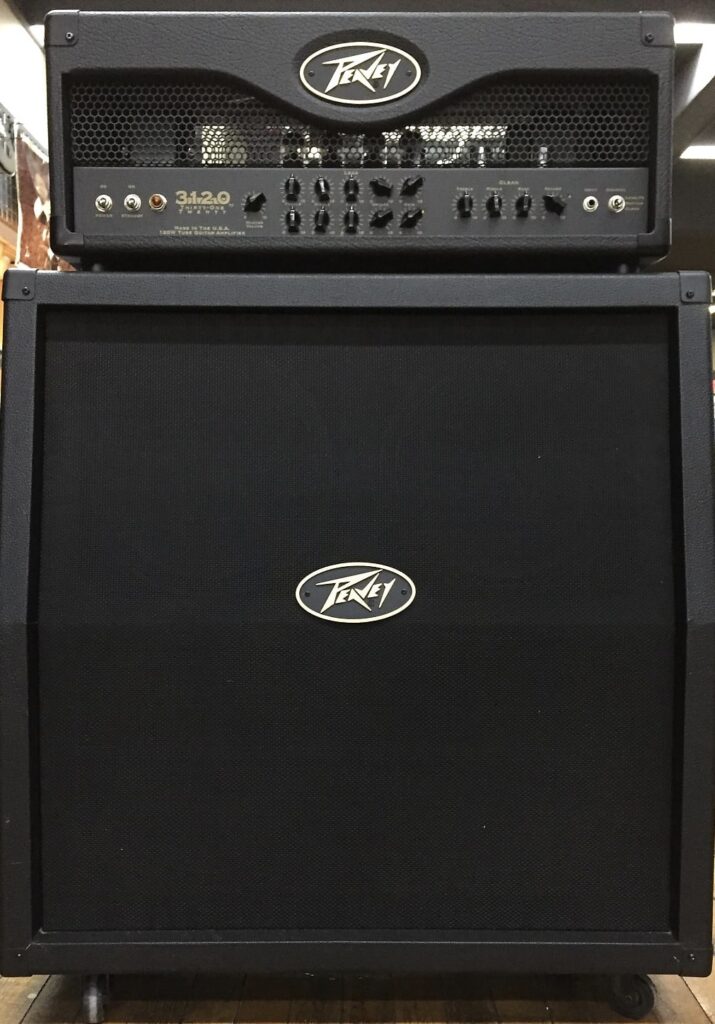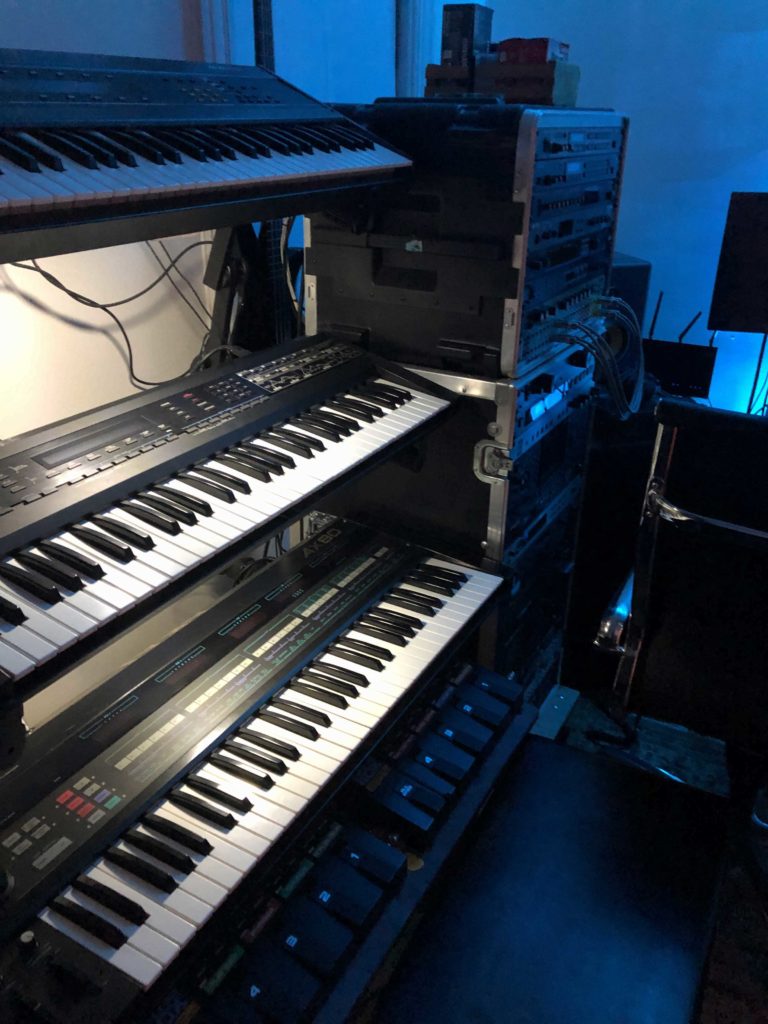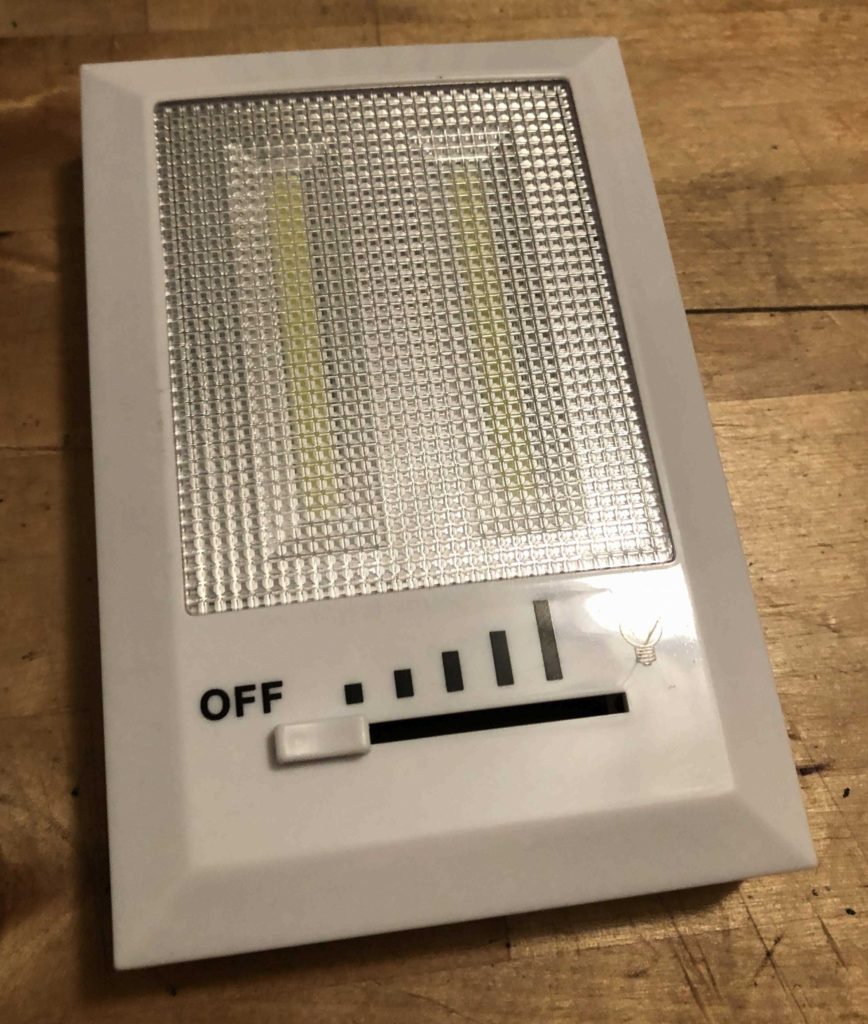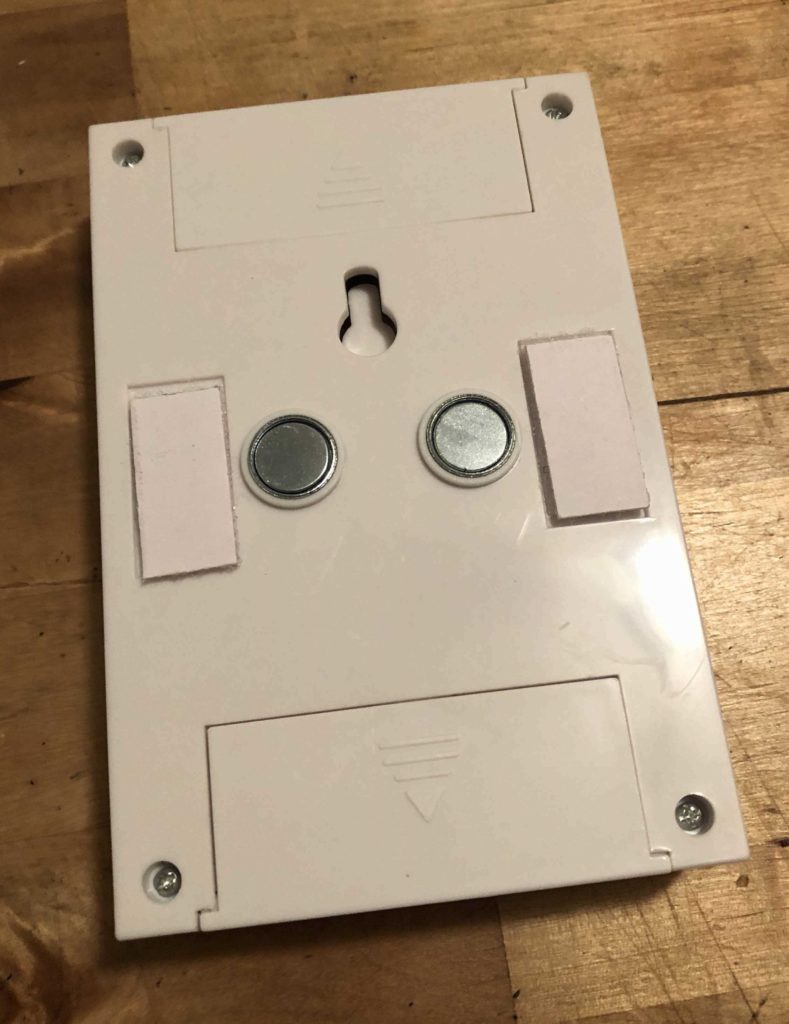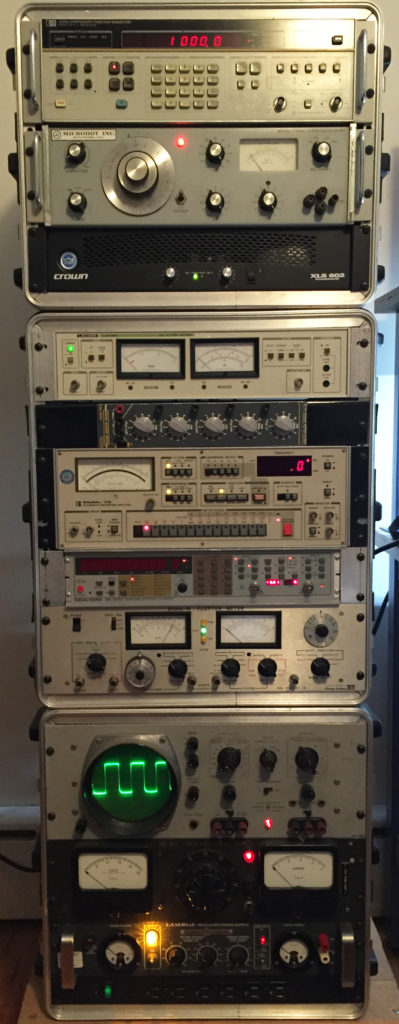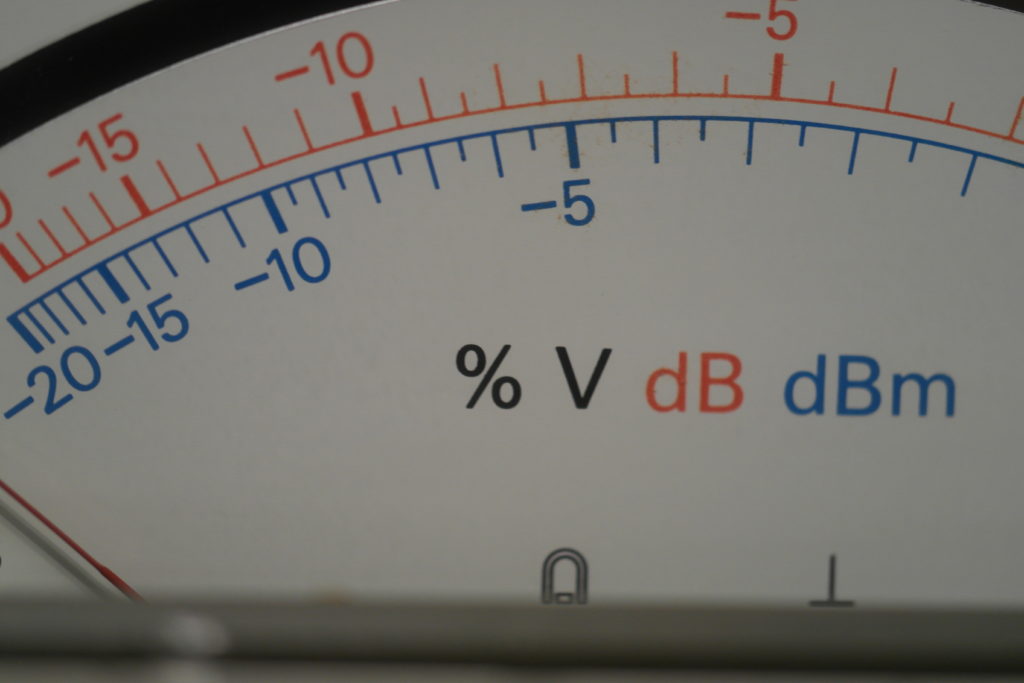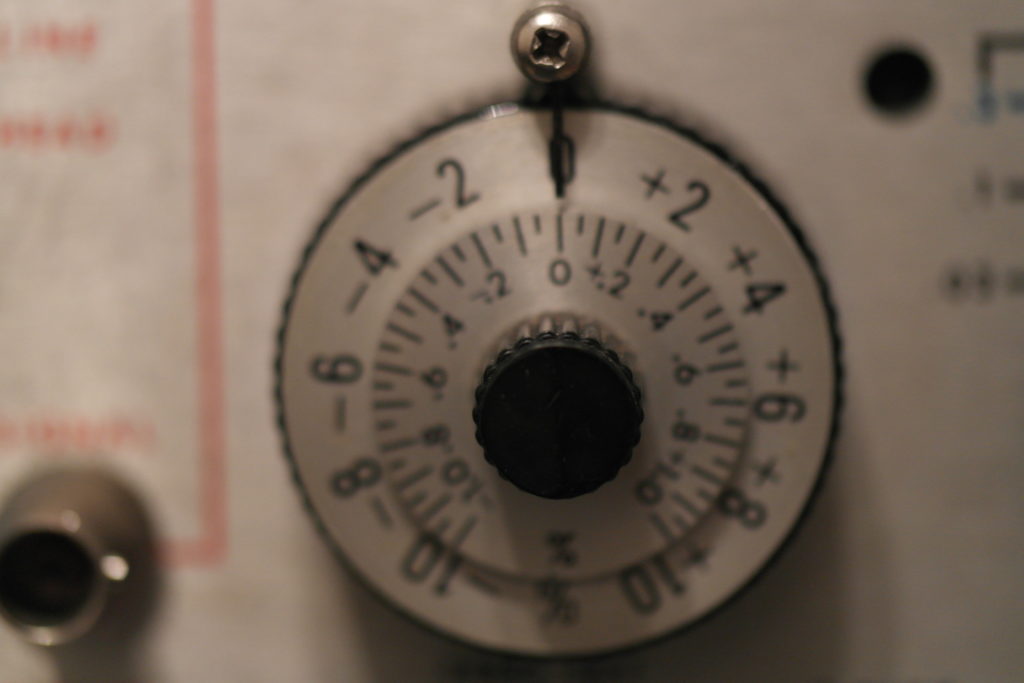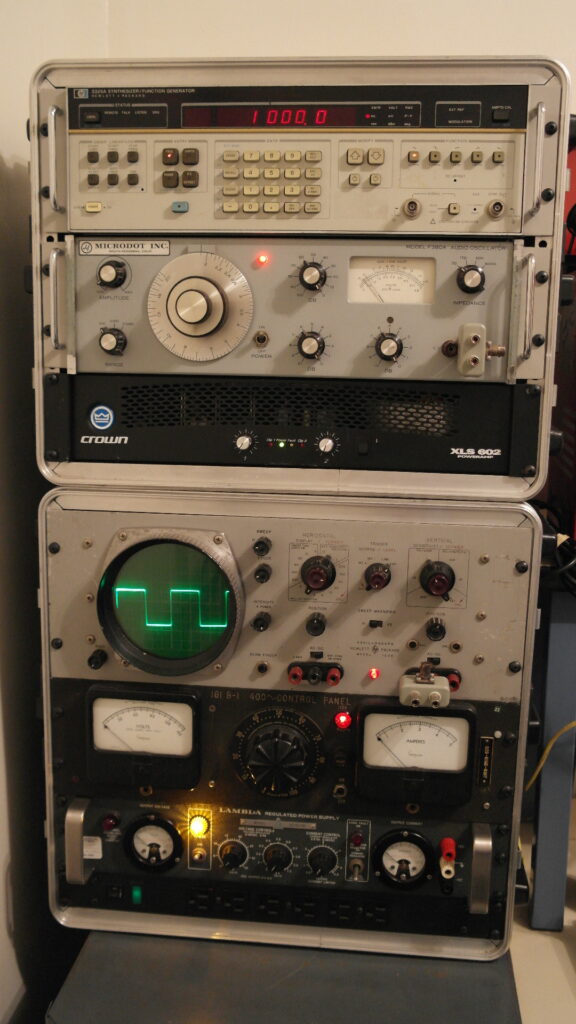During the virus lock down I was on the hunt for a project to work on. I picked up an Ampeg VT-22 on craigslist in bad shape for $100. Unknown of it’s true condition, it sounded fun and I decided to tackle this one in stages to stay busy. Keep in mind, I decided to not power on this amp at all until the project was fully completed, a very risky action giving the unknown condition before starting to rebuild. Cosmetically it was filthy, needed a new grill cloth, new hardware, vinyl was peeling and many screws were loose. As for the speakers, one read zero ohms and the other was fluctuating upon reading, additionally a pre-amplifier and power tube was missing.
I started by cleaning the amp, inspected the circuits, and removed the speakers. The speakers I sent over to my friends at Gabriel Sound. They always do a great job restoring my vintage speakers. Check out their website https://www.speakerrecone.net/recones and the work they did on these vintage Celestian G12M-70’s. I requested to have 8 ohm coils installed and wired them up to be in parallel at 4 ohms.
So while the speakers were out for rebuild, I started on the grill cloth and hardware. The cloth I bought on eBay for cheap and installed with a staple gun. The hardware I acquired from home depot and choose a durable stainless. I used my century 100 tube tester on the tubes and determined what needed to be replaced based on strength test. For the missing output tube, I purchased a clear top RCA nos tube to match the GT tubes that were already installed.
Luckily all the electronics were in good shape for their age and the only modification the prior owner made to this amp was an additional pot added to the amp output signal. Below are some pics of the amp’s insides and the tubes that I have installed.
I am glad I fully opened up the amp, when I was at this stage I sprayed all the pots with fader lubricant/cleaner and used deoxidizer on all the connections. So after the amplifier was re-assembled I plugged in the unit and tested for functionality. I lifted the ground switch to reduce noise since the power plug does not have a ground plug. This amp is ridiculously loud and has the ability to sculpt any clean to mildly distorted guitar sound possible. Although there are only a few knobs for adjustment, the switches allow you to grab the correct range for your preference. The channels 1 (clean) and 2 (distortion) are blend-able and you can even send two signals in at once. This is not a stereo amp but it is very flexible and unique. I would have to say, the reverb is lush and overall I fell in love with this amp’s unique rich sound. This amp falls into that category of higher voltage plate amp and really seems alive when powered on, worth every penny in the used market. Best of all, when seeking these type of projects the gear is well documented, discussed and parts are readily available. Unlike my last project an Ampeg VT-120, the push pull pots are difficult to find and the amp guts are way over crowded. Here are some finished refurbished pictures and below you will find all the manuals plus ads I have collected.

